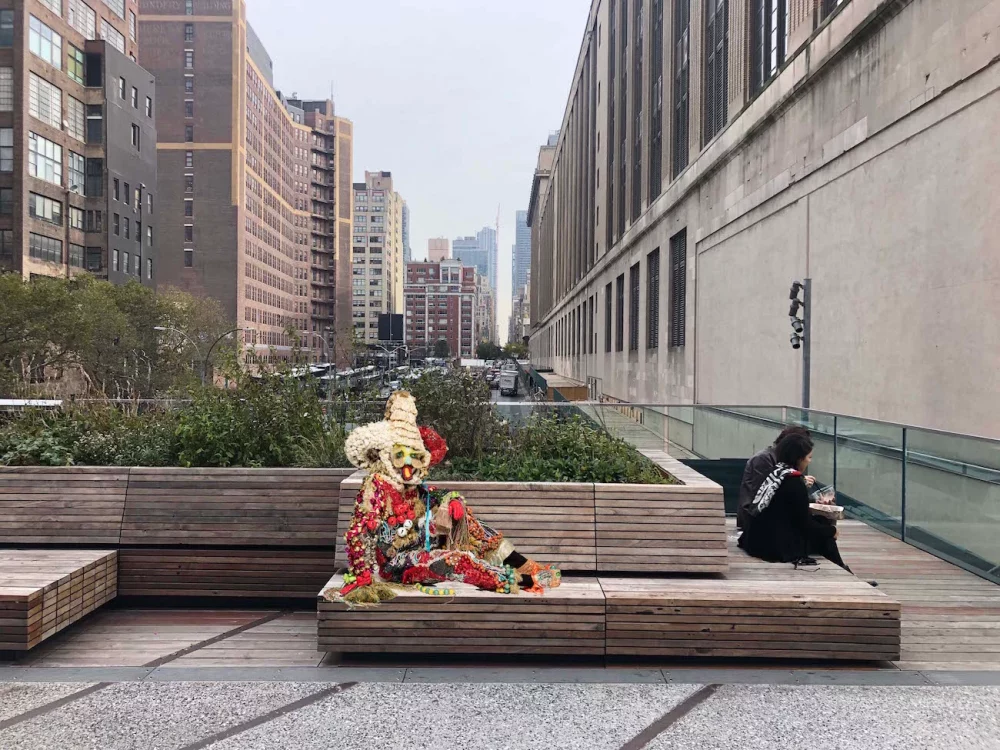
- Source: ARTNews
- Author: Andy Battaglia
- Date: February 18, 2020
- Format: Online
High Line in New York Unveils Public Art Commissions, as Conceived by Future Venice Biennale Curator Cecilia Alemani

Rendering of a work for "The Musical Brain" by Raúl de Nieves.
As organized by Cecilia Alemani, the recently appointed curator for next year’s Venice Biennale, High Line Art—the program responsible for public art on the former train tracks that play home to New York’s well-trafficked elevated park—will feature a music-minded group exhibition and two solo sculpture projects among its commissions for 2020. When they open in April, all three will join a mural above 22nd Street recently created for the program by ascendant painter Jordan Casteel.
Taking sound as its cue, “The Musical Brain” will feature eight artists known to “think about music as a way of connecting people,” Alemani told ARTnews. “Music is completely a component of what happens in the public sphere and in our public life, so we wanted to capture and see how artists would react to [it] in a broad way.”
The artists in the exhibition—Rebecca Belmore, Vivian Caccuri, Raúl de Nieves, Guillermo Galindo, David Horvitz, Mai-Thu Perret, Naama Tsabar, and Antonio Vega Macotela—will be assembled under a title inspired by a short story by Argentine writer César Aira. “As often happens with our group shows,” Alemani said, “we provide a hint or a recommendation that artists can interpret in different ways. It’s important for us that we’re able to produce new commissions and new work. Two works already existed but were too perfect not to include, and, for lack of a better word, they have a ‘site-specific’ connection to the High Line.”
Materials in the exhibition—which was curated with Melanie Kress, High Line Art’s associate curator—will include more than ineffable sound. “Usually when you think of a sound or music show, you don’t necessarily visualize objects or sculptures,” Alemani said. “But we made an effort to have a physical presence because we realized that, if you were to do, like, just a sound show on the High Line, the audience would miss half of it because it’s already so loud. So we invited artists to really think of sculptural embodiments of sound and music.”
Beyond the group show, the High Line will also be the site this season of two solo commissions: Hannah Levy’s Retainer, a large evocation of an orthodontic appliance carved in marble from a quarry favored by Michelangelo, and Ibrahim Mahama’s 57 Forms of Liberty, a work described as “inspired by a rusted smokestack the artist saw at a locomotive workshop in Sekondi, Ghana, that now has a tree growing from its mouth.”
Alemani said all of her programming keeps a wide variety of audiences in mind. “What’s important is that what we show and commission makes sense for the High Line as a park that welcomes over eight million people and that each work we exhibit can offer a variety of entry points and accessibility in terms of meaning,” she said. “Nothing is too didactic, and the works that we show are open enough that they can welcome the audience in. We try to work with artists so they can engage the audience in an active way, not a prescriptive way.”
Asked if such considerations would figure into her approach for the Venice Biennale, Alemani—who has worked as the director and chief curator of High Line Art since 2011—said, “I can’t really talk about that. But what I’m excited about is to think of the spaces of the Venice Biennale. The Arsenale, though it’s enclosed, is of a certain size and dimension that it almost feels like an open space or an unusual museum space. It’s hard to tell right now, but of course it will influence what I will do in Venice—because this is the job I’ve had for eight years.”
Or perhaps not. “Maybe it will be the opposite, and just be paintings,” she said with a laugh. “I don’t know!”

Guillermo Galindo, Fuente de lagrimas (Fountain of Tears), 2014 RICHARD MISRACH/COURTESY THE ARTIST

